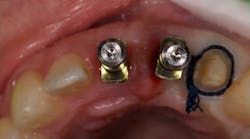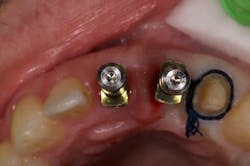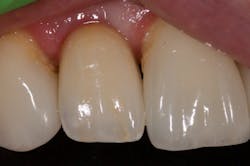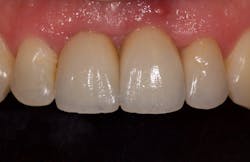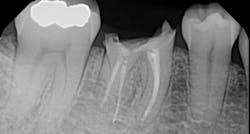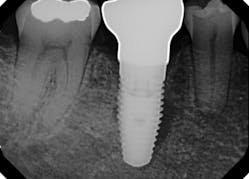Editor's note: Article originally posted in 2018; reviewed for clinical accuracy and formatting in 2021.
Over the last three years ...
I have crisscrossed the US as a speaker for Nobel Biocare, talking to dental groups of all sizes about how we have implemented the implant tooth-replacement modality into my practice in Texas. What we call our "38th Street Dental Treatment Model" was actually the product of a conscious decision that took me almost 13 years as a dentist to realize what was right for me, my patients, and my business system.
In 2010, I declared to my practice partner that this was "the year" I was going to start restoring more dental implants. The prior 13 years that I had restored anywhere from a couple of implants a year to a dozen or more led me to see the great advantages this type of care offers my patients and my general practice—outcomes that are good for patients as well as my practice’s financial bottom line. How often do we get that synergy of characteristics in dentistry and business?
Excitedly, I made a resolution that year to restore more implants. But what I didn't realize was that a dental implant is not a treatment of last resort—it's a patient choice.Related reading: Successfully integrate implants into your practice
Early on, with my new resolve, I spent consultation after consultation trying to convince patients that getting an implant was their only restorative choice, because their existing nonrestorable tooth was a train wreck. Instead of spending time listening to my patients about their desires to have restorations that would last as long as possible without inconvenient delivery appointments or potential disappointing consequences, I was acting as judge and jury as to what my patients should do in their particular situations in that traditional role dentists often play. I should have been facilitating care that is consistent with my patients' desires and value systems.
The problem I found with the judge-and-jury approach is that it imposes the dentist's value system on the patients, instead of educating them about the various treatment options available to them. Education allows patients to select the outcome that best suits their needs and long-term goals. Our job as dentists is to do our best to educate patients about what matters most to them so that they are happy with the product we deliver and its performance over the many years they expect from our work.
So, what happened next?
I began centering my consultation appointments on options that subsequently allowed patients to actually sell themselves on the implant treatment modality. I would present the tooth-replacement options of endo/core/crown, extraction/bridge, and extraction/implant ... and then I would explain the pros and cons of each. What I found is that patients overwhelmingly chose the root-replacement option—dental implants—over the old-school (drill-o-dontics) to reconstruct their missing tooth. Patients actually wanted an implant once they were armed with all the complete information they needed to make their decision. Having models on hand that show the difference between each option is highly effective, especially for those patients who are visual learners.
When your treatment plan includes only the next most conservative procedure—instead of all treatment options—inevitably you will do lots of work “saving” badly damaged roots and roots with guarded or poor long-term prognosis. Some patients may applaud or highly value these efforts on your part, but I have met many more who are glad to skip the possibility of re-treatment, root fracture, core failure, etc. You'll find that many patients will choose implants as an expedient and efficacious alternative to restoring the root with diminished or guarded prognosis, rather than spend their money over and over again on an undesirable tooth.
This is the paradigm shift in thinking that initiated big changes in my practice. In 2010, my little office restored 38 implant fixtures. By 2017, we were restoring closer to 200. What a difference! When patients began to realize they had treatment possibilities that may have a better long-term prognosis than the traditional replacement options, implants became a definite green light for them.
If you want to restore more implants, then you must treatment plan more implants! I believe that when dentists themselves believe in the treatment modality, it will sell itself. Ask yourself, “Is my education and training with implants good enough for me to be confident in recommending them to patients?” If not, that could be why you are not restoring as many as you would like to be. There’s an easy solution here—attend more continuing education classes or join a study club. Identify where your weaknesses exist, and get the information you need to help you provide well-informed, confident, consultations with your patients. You’ll be amazed at the number of implants you will begin to restore in your practice when the implant becomes a treatment choice instead of a last-resort selection.
